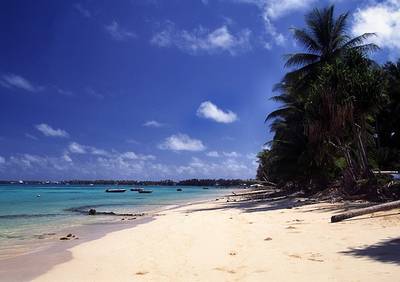
Neil McPherson
OPINION: AUCKLAND: With a mixture of realism and optimism, Rev. Baranite Kirata, an islander and member of The World Council of Churches, explained that "it is now too late to do something for Kiribati, Tuvalu and the Marshall Islands; but together, we are the world, and it is not too late to do something for us all."
That remark was made in 2008. Called by some the "liquid continent," the Pacific contains a narrow scatter of islands, individual entities and small national states that dot the South Pacific Ocean from Papua New Guinea on the eastern side to Tahiti on the west and from the Marshall Islands in the north to New Caledonia in the south.
While our voracious appetite for news and information lasts, let us take a last glance at just two of those islands. It is a little-known but tragic story that began with the first smokestack of the industrial revolution. It began to scream along from the moment in 1913 when the initial production-line automobile rolled out and the polar ice-melt began to drip.
Nauru
In April 2004, Melissa Fife, an environment reporter for Australia's The Age newspaper, reported that many islands in the South Pacific Ocean were already drowning in debris with a non-marine origin. Despite a lot of hemming and hawing by politicians and "environmental" academics, nothing much has changed since then, except the creeping level of the high tide mark, plus occasional fragments washed onshore from the last devastating tsunami that hit Thailand beaches, resorts, and several surrounding Asian nations.
On the island of Nauru, once famous for its phosphate resources from guano, the byproduct of aeons of nesting birds, the seashore presented a “blue-green rim that clanks gently on the tide—thousands upon thousands of Foster's and Victoria Bitter beer cans". So wrote Australian marine biologist Peter South in 2004. “The drift line is all beer cans.”
South made his comments in a United Nations Environment Program (UNEP) assessment of the Pacific region. Inspired and soothing talk and earnest declarations have kept flowing since, to no effect.
Now, the islands of the region nervously waited to know their fate from Japan’s worst earthquake and the wave it generated. Six years ago, rubbish was fast overtaking climate change as a key threat to the future of small island states. Now that the small impact of the Japan earthquake on these islands is known, the old problem will re-assert itself to re-litter what little remains.
Where do you go to bury and old car body on an island not much bigger than a championship golf course?
The Pacific’s myriad tiny islands are running out of space to dump their domestic rubbish and tour visitors’ inevitable traces. River and groundwater contamination are killing off turtles and marine birds mainly because of the litter. Mangroves, the natural stabilisers of marine life at the sea’s edge, are being lost to landfill, and recycling remains a shambles, as the UNEP international water assessments found.
It seems the devastation of the last tsunami will fade faster in developers’ minds as do the US amphibious-tank wrecks on the coral reefs from invasion landings at Saipan in the Marianas group 65 years ago. But the Marianas are now USA concerns and, for a time, golf courses for Japanese tourists.
Tuvalu
When Iokapeta Selulo, from the tiny Pacific nation of Tuvalu, heard the news of an earlier tsunami, she was fearful. "Imagine if it [the earthquake and tsunami] happened to us, we would have nowhere to escape—we don't have any higher ground," she said. At just 26 square kilometers in land area, Tuvalu is the fourth-smallest country in the world. The highest point on the island is only five meters above sea level.
Last night, I vainly tried to contact someone, anyone, on one of the nine sandy, palm-fringed isles in the group that was once called the Alice Islands. The tiny government tourist office had two phone numbers and one email address. None was current and the website was last updated in 2005. Have you tried using the White Pages to find a number in that region? Frustrated by midnight, I awoke to find the glad news (from Australia) that the Pacific Islands seemed unscathed this time and that the waves had subsided.
But the world's islands, not just in the South Pacific, are running out of space to dump rubbish. They have mortal river and groundwater contamination, and their turtles, marine birds, and, on one island of Kaua‘i, closer to Hawai'i, 48 endangered species, are likely to die because of the litter.
Mangroves here are being lost to landfill and recycling is almost non-existent, UNEP's international found six years ago. Tuvalu recently reported that three islets are now submerged, and the islands suffer from over-fishing, freshwater shortages now and in the future, and inadequate sanitation services.
Professor South, director of the Townsville-based International Ocean Institute Regional Centre for Australia and the Western Pacific, said waste disposal on islands was not easy.
"There is no simple way to dispose of a car body on a Pacific island. No one comes and picks it up in a truck," Professor South said. "I think we do have reason to be concerned about the way things are going in the Pacific."
An understatement from Down Under. - Blogcritics/Pacific Media Watch



